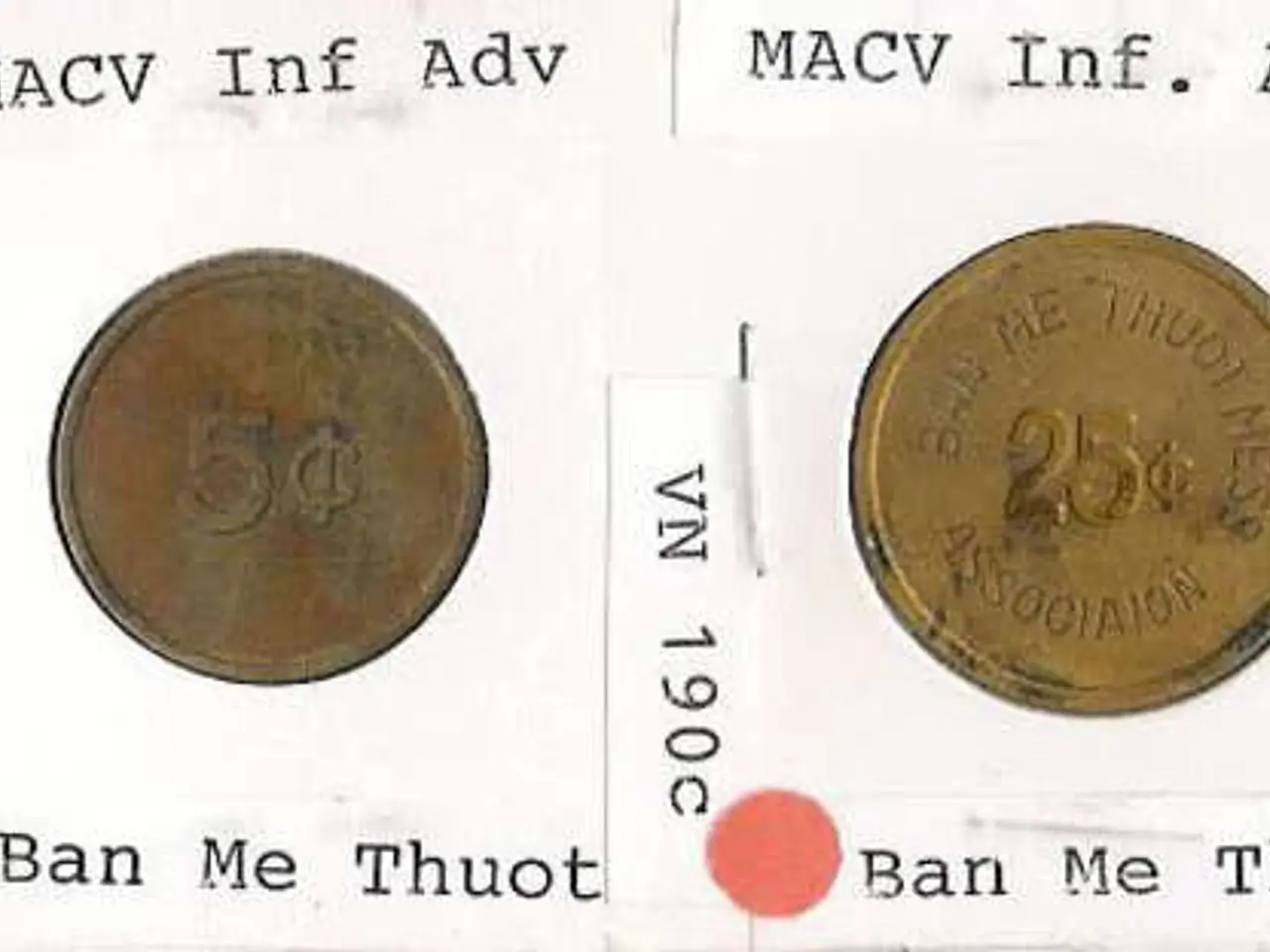Successful Debut of Calamos Autocallable Income ETF (CAIE) Yields Robust Initial Dividend after Effective Launch
The Calamos Autocallable Income ETF (CAIE) was launched in late June 2025, providing retail investors with access to autocallable income strategies previously available mainly to ultra-high-net-worth (UHNW) investors and institutions [1][2][3]. The ETF invests in a laddered portfolio of over 52 autocallable structured products tied to the S&P 500, offering a high monthly income stream as long as the index does not drop more than 40%.
The ETF employs a laddered portfolio strategy of autocallables staggered weekly, which reduces timing risk and provides a more stable income compared to holding individual autocallables [1][2][4]. This structure taps into coupons contingent on the S&P 500 staying above a roughly -40% barrier, meaning coupon payments may be suspended during significant market downturns, and principal losses could occur if the protection barrier is breached at maturity [1][2][4].
Key features and operational aspects of CAIE include:
- Strategy and Exposure: The ETF pools 50+ autocallable derivatives referencing the S&P 500, offering income linked to equity performance rather than bonds. The MerQube US Large Cap Vol Advantage Autocallable Index serves as the index methodology, and J.P. Morgan acts as the swap counterparty [1][2][4].
- Complexity and Risks: The autocallable strategy is complex, involving multiple risk factors, including market downside risk and income payments that are not guaranteed but contingent on index performance above specified barriers [2].
- Operational Complexity and Tax Efficiency: By wrapping complex autocallables into an ETF, Calamos has effectively eliminated much of the operational complexity and tax inefficiency traditionally seen in structured products, offering daily liquidity and tax-efficient distributions [2][3].
- Expense Ratio: The fund carries a higher expense ratio of about 0.74% compared to typical ETFs, reflecting the complexity and underlying derivative costs [2].
- Distribution Composition: Most of the first distribution (about 94%) represented a return of capital, with the remainder (~6%) as net investment income, and no capital gains reported, indicating tax efficiency aspects typical for structured product income streams [5].
CAIE offers retail investors simplified, liquid exposure to institutional-style autocallable income strategies, combining a ladder approach to diversify timing and lower downside risk. It delivers strong early yield but carries risks typical of structured products, namely dependence on equity index performance and potential principal loss if downside thresholds are breached. Its ETF wrapper improves operational simplicity and tax efficiency compared to direct structured note investments [1][2][3][4][5].
However, it is essential to note that the returns of the Calamos Autocallable Income ETF are correlated to the performance of a synthetic portfolio of autocallable notes tracked by the Laddered Autocall Index. The Fund(s) have numerous market trading risks, including authorized participation concentration risk, cap change risk, capital protection risk, capped upside risk, cash holdings risk, clearing member default risk, correlation risk, derivatives risk, equity securities risk, investment timing risk, large-capitalization investing risk, liquidity risk, market maker risk, market risk, non-diversification risk, options risk, premium-discount risk, secondary market trading risk, sector risk, tax risk, trading issues risk, underlying ETF risk, and valuation risk [1].
Additional principal risks, such as autocallable structure risk, contingent income risk, early redemption risk, barrier risk, authorized participant concentration risk, calculation methodology risk, cash holdings risk, correlation risk, costs of buying and selling fund shares, counterparty risk, credit risk, derivatives risk, equity securities risk, index risk, interest rate risk, investment in a subsidiary, laddered portfolio risk, liquidity risk, market maker risk, market risk, new fund risk, non-diversification risk, premium-discount risk, secondary market trading risk, swap agreement risk, tax risk, trading issues risk, valuation risk, and volatility target index risk, are also associated with the Fund(s).
Lastly, Calamos and its representatives do not provide tax or legal advice. Investing in the Fund(s) involves risks, and loss of principal is possible [1]. Performance data quoted represents past performance, which is no guarantee of future results [1]. Calamos Financial Services LLC is the Distributor of the Calamos Autocallable Income ETF [1].
[1] Calamos Investments, Press Release, Calamos Autocallable Income ETF Launches, June 2025. [2] ETF Trends, Calamos Autocallable Income ETF Launches, July 2025. [3] InvestmentNews, Calamos Autocallable Income ETF Launches, July 2025. [4] ETF Database, Calamos Autocallable Income ETF, 2025. [5] Calamos Investments, Calamos Autocallable Income ETF Quarterly Report, Q2 2026.
- The Calamos Autocallable Income ETF's performance is linked to the S&P 500, a feature that offers exposure to equity markets instead of bonds.
- The ETF taps into technology by employing a complex autocallable strategy, which includes derivative costs and risks, such as those associated with market downturns, income payments contingent on index performance, and potential principal loss if downside thresholds are breached.
- To simplify access for retail investors, Calamos has wrapped the complex autocallable structure into an ETF, ensuring daily liquidity, tax-efficient distributions, and improved operational simplicity compared to direct structured note investments.




